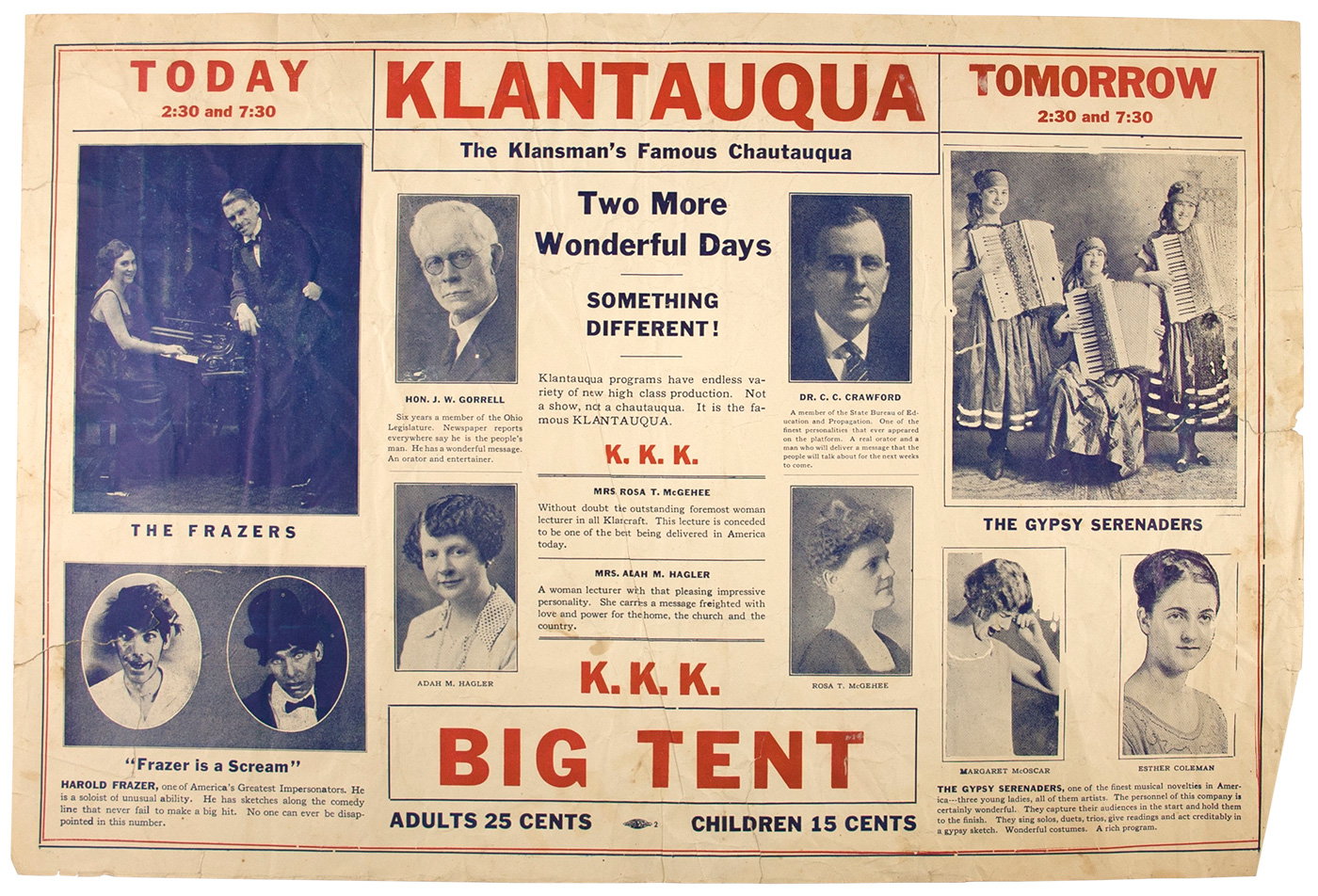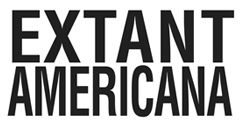 (Ku Klux Klan) Broadside, “KLANTAUQUA The Klansman’s Famous Chautauqua” ([Illinois, c. 1924*]), 350 x 525 mm. (14 x 21 in.). An unusual advertisement for the Ku Klux Klan’s version of a Chautauqua meeting.
(Ku Klux Klan) Broadside, “KLANTAUQUA The Klansman’s Famous Chautauqua” ([Illinois, c. 1924*]), 350 x 525 mm. (14 x 21 in.). An unusual advertisement for the Ku Klux Klan’s version of a Chautauqua meeting.
The Chautauqua movement was a populist adult education drive spawned from the 1874 New York Chautaqua Assembly, an educational camp for families established on Chautauqua Lake in New York State. The Chautauqua was the successor to the Lyceum movement, which provided a lecture circuit for transcendentalists, as well as other prominent social reformist lecturers such as Abraham Lincoln and Susan B. Anthony. The Chautauquas infused entertainment into the reformist lecture circuit, to engage families and appeal for attendance in rural areas. Though founded by Methodists, the Chautauqua movement was strictly nondenominational, and the chapters determined the extent of nature of religious integration into their programming independently. The Chautauqua movement declined in the early 20th century with the advent of mass communication, such as the automobile in 1910 and radio in 1920, which made information more accessible to rural Americans.
The predominantly Protestant participants in the Chautauquas were progressives by nature, but deeply divided on matters of race relations. Although race was a consistent topic of lecture and discussion on both sides of the spectrum, the Chautauquas cultivated a general sentiment of noninvolvement regarding race issues beyond intellectual contemplation. In contrast, Klantauqua sought to politicize the Chautauqua platform by galvanizing the gatherings around the Ku Klux Klan’s anti-Black, anti-Catholic and anti-Jewish agendas.
Marginal tears and soiling, some larger tears repaired on verso, else good condition overall.
(EXA 5349) $475
___________
* A Klantauqua with a similar billing (Gorrell as well as the Frazers) appeared in Rochelle, Ill. from 29-31 July 1924 (Daily Register Gazette, Rockford, Ill., 24 July 1924, 3).
